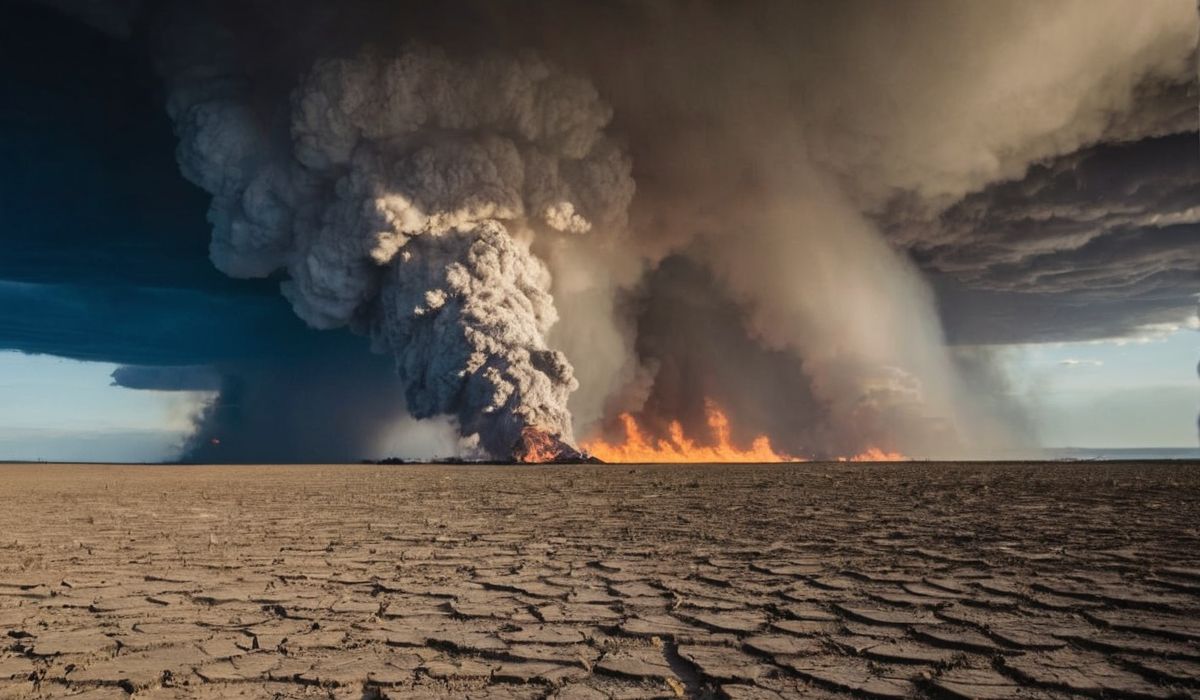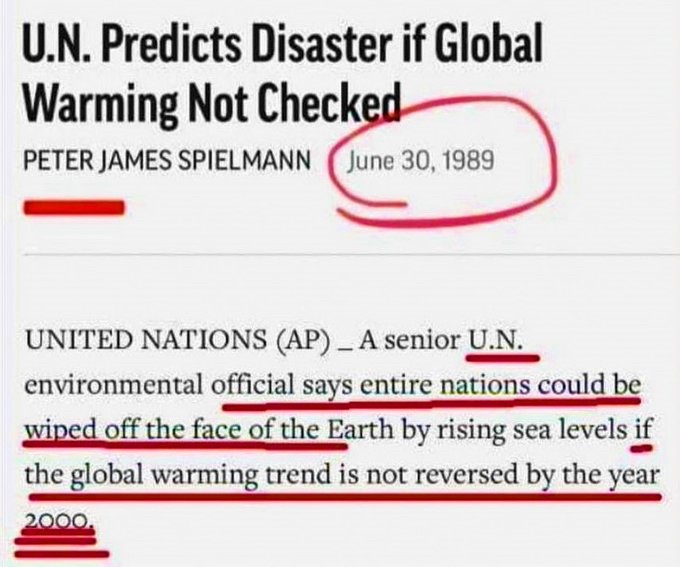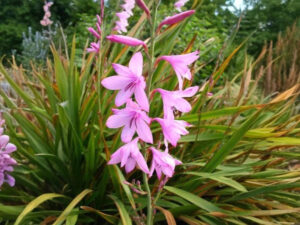
The current climate change crisis was recently brought to international attention by a post from Elon Musk, who said: “The only action needed to solve climate change is a carbon tax”.
The only action needed to solve climate change is is a carbon tax https://t.co/mEGhIkSVsn
— Elon Musk (@elonmusk) February 3, 2024
This was in response a video from a user named @farzyness, called “Elon Musk’s Unbelievably Simple Killer Break Down on Climate Change”.
Musk then followed the tweet with a statement: “We should not, for example, impose draconian laws on farmers or make citizens uncomfortable by limiting air-conditioner usage! Keep tax revenue constant but shift it to tax what is probably bad (CO2), just like alcohol & cigarettes are taxed more than fruits & vegetables.”
While Musk’s post is getting a lot of support from the left, this statement has been met with widespread criticism from leading scientists.
Nuclear Physicist Willian Happer of Princeton University says that: “Alarms about climate change are delusions. Climate change is real but it is natural. The alarms have no scientific basis. The fears that are woven around are comparable to the fear that was induced in the time of witches in the Middle Ages.”
Happer argues in this interview that ignorance and political manipulation play a key role in the global campaign on global warming.
Richard Lindzen, professor emeritus of atmospheric science at Massachusetts Institute of Technology (MIT), argued that the claims used by the EPA to justify the new regulations aren’t based on scientific facts but rather political opinions and speculative models that have consistently proven to be wrong.
“The unscientific method of analysis, relying on consensus, peer review, government opinion, models that do not work, cherry-picking data and omitting voluminous contradictory data, is commonly employed in these studies and by the EPA in the Proposed Rule,” Happer and Lindzen wrote. “None of the studies provides scientific knowledge, and thus none provides any scientific support for the Proposed Rule.”
“All of the models that predict catastrophic global warming fail the key test of the scientific method: they grossly overpredict the warming versus actual data. The scientific method proves there is no risk that fossil fuels and carbon dioxide will cause catastrophic warming and extreme weather.”
“Contra the IPCC and other major institutions, he argues that climate is primarily set by what he refers to as the “cloud cover thermostat,” a self-regulating process whereby more clouds start to enshroud the Earth when the temperature is too high, and vice-versa. Although he accepts observations showing that atmospheric carbon dioxide is increasing, he believes that gas’s effect on heat transfer is swamped by a great natural cloud cycle.
“It [the carbon dioxide] may or may not be made by human beings,” Ms. Clauser said. “It doesn’t really matter where it comes from.”
The physicist believes that objective science on climate has been sacrificed to politics. The preeminence of politics is all the worse, he said, because so much money has already gone to climate.
The origins of the climate crisis narrative
The climate narrative started in 1957. During this year, a carbon dioxide measurement experiment in Hawaii led to the Keeling Curve, which showed an increase in atmospheric carbon dioxide levels. This, in turn, led to a 1963 report by a cherry-picked panel, of which only two were climate scientists, and one was a Rockefeller appointee.
Critics claim that the report was spectacular, but for all the wrong reasons. It was a long recital outlining all that they didn’t know – and the one thing they did; that carbon dioxide increase plant growth, and they did not anticipate any fundamental changes in global temperatures over the next 35 years. In spite thereof, the carbon dioxide hypothetical was fear-mongered throughout, and the report was escalated as a national security issue by the White House.
In 1968, UNESCO arranged perhaps the most important conference in the history of the United Nations, to which, the carbon consensus served a significant input factor. This launched the Stockholm 1972 call, along with the UNESCO’s biosphere reserves, global surveillance, and the world resource institute.
In 1976, Bert Bolin, addressing the US senate, stated that all they knew for sure was that carbon dioxide would lead to increased plant growth. Further, he stated no climate scientist could cite predictions with any level of accuracy.
However, in 1979, a new ‘consensus’ formed, at yet another ICSU-arranged invite-only event, where all conference proceeding papers were hinting at an extraordinarily obvious bias. And as soon as the conference concluded, alleged global temperature started to increase in an almost linear fashion.
Bolin would then go work on the consensus as a member of the ICSU/SCOPE-inspired AGGG, which was the 1980s front runner for the Intergovernmental Panel on Climate Change (IPCC).
The IPCC warned that if greenhouse gas emissions continue at their current rate, the global temperature could increase by 1.5°C to 2°C above pre-industrial levels by the end of the century.
In 1989, Al Gore released a paper, outlining a predicted 5 degree increase in global temperatures within the lifetime of his children. He would then go to work, ensuring that the Convention on Biological Diversity (CBD) would pass.

Al Gore has been a prominent advocate for action on climate change and has warned of the potential consequences of global warming. In his book and documentary “An Inconvenient Truth,” he presented evidence of the impacts of climate change and called for action to reduce greenhouse gas emissions.
In 2007, the IPCC’s Fourth Assessment Report stated that “warming of the climate system is unequivocal, as is now evident from observations of increases in global average air and ocean temperatures, widespread melting of snow and ice, and rising global mean sea level.” The report also warned that “continued emissions of greenhouse gases will cause further warming and long-lasting changes in all components of the climate system, increasing the likelihood of severe, pervasive, and irreversible impacts for people and ecosystems.”
Following that, Al Gore and John Kerry predicted in 2009 that “polar ice caps would be gone by 2014”.
Cheerleaders for the "human-induced climate change" hoax, Al Gore and John Kerry, predicting that the polar ice caps would be gone by 2014. pic.twitter.com/9ntUIF6kpz
— illuminatibot (@iluminatibot) February 1, 2024
In the 1960’s we were told that oil would be gone in 10 years. In 1970’s we were warned there would be another ice age in 10 years. In 1980’s they told us acid rain would destroy all the crops in 10 years. They warned us the ozone layer would be gone in 1990’s. And, in 2000’s the ice caps would be gone in 10 years. Yet none of their predictions have come true. That it has become more politics than science is quite telling.

Source: https://tinyl.io/7a3H
Climate sceptics argue the findings show that the extra CO2 is actually benefiting the planet and boosts plant growth.
A quarter to half of Earth’s vegetated lands have shown significant greening over the last 35 years due to rising levels of atmospheric CO2. This greening represents an increase in leaves on plants and trees equivalent in area to two times the continental United States.
Studies confirm that higher CO2 concentrations increase photosynthesis, spurring plant growth. Green leaves use energy from sunlight to combine CO2 with water and nutrients, producing sugars—the main source of food, fiber, and fuel for life on Earth.
Despite scientific evidence the CBD continues to influence the UNFCCC. The 2023 Paris Climate Agreement under the UNFCCC acknowledges the importance of conservation, biodiversity protection, and maintaining ecosystem integrity.
The CBD is in effect is the sell-side of the UNFCCC’s scary predictions. And they represent the buy-side of carbon credits in what will become the greatest scam in world history should it not be stopped.
Carbon credits and control
Carbon credits are tradable permits that allow the owner to emit a certain amount of carbon dioxide or other greenhouse gases. They are part of a market-based approach to reducing greenhouse gas emissions. Companies can buy and sell these credits, creating a monetary incentive to reduce their own emissions.
Eva Vlaardingerbroek @EvaVlaar reacts to a Dutch banking CEO who has suggested 'carbon wallets' be introduced to monitor and regulate individual carbon footprints.
— James Melville 🚜 (@JamesMelville) August 3, 2022
The mission creep towards digital ID social credit systems continues. pic.twitter.com/LpVjk370BG
Eva Vlaardingerbroek reacts to a Dutch banking CEO who has suggested ‘carbon wallets’ be introduced to monitor and regulate individual carbon footprints.
However the use of carbon credits may not be voluntary. Here are some ways governments can impose carbon credits:
- Governments set a cap on total emissions for specific sectors (e.g., power plants, industries).
- Companies receive emission allowances (credits) based on this cap. If a company exceeds its allowance, it must buy additional credits or face penalties.
- Governments impose taxes on carbon emissions. Companies can offset their tax liability by purchasing carbon credits.
- Some countries consider imposing carbon credits on air travel. Airlines would need to buy credits to compensate for their emissions.
- Governments may require importers to purchase carbon credits equivalent to the emissions associated with imported goods.
- Non-compliance with emission reduction targets can result in legal consequences.
Overall, carbon credits are a mechanism to create a market for reducing greenhouse gas emissions. While they have the potential to incentivize emission reductions and support climate action, the effectiveness of individual projects and the integrity of the carbon credit system have been the subject of scrutiny and debate.
Scientific consensus
While there have been concerns about the depletion of natural resources and the impact of human activities on the environment, the scientific consensus is that human activities, including the burning of fossil fuels, have contributed to an increase in greenhouse gas concentrations in the atmosphere and a corresponding increase in global temperatures.
The scientific evidence for warming of the climate system is unequivocal, and the current warming trend is different because it is clearly the result of human activities since the mid-20th century and is proceeding at a rate not seen over many recent millennia.
While there have been variations in scientific predictions over time, the overall trend is clear: human activities are contributing to climate change, and urgent action is needed to reduce greenhouse gas emissions and mitigate the impacts of global warming.
But we should take the current scaremongering with a grain of salt and push back on efforts to increase taxes and control population movement and farming.
References
The United Nations Framework Convention on Climate Change (UNFCCC) is an international treaty that aims to address climate change by stabilizing greenhouse gas concentrations in the atmosphere. The UNFCCC was signed in 1992 by 154 states at the United Nations Conference on Environment and Development, informally known as the Earth Summit, held in Rio de Janeiro. The treaty entered into force on 21 March 1994. The UNFCCC is a multilateral body concerned with climate change and can be an inefficient system for enacting international policy due to its complex nature.
New International Biodiversity Agreement Strengthens Climate Action (link)
Innovative Finance for Nature and People: Opportunities and Challenges for Biodiversity-Positive Carbon Credits and Nature Certificates PDF (link)







